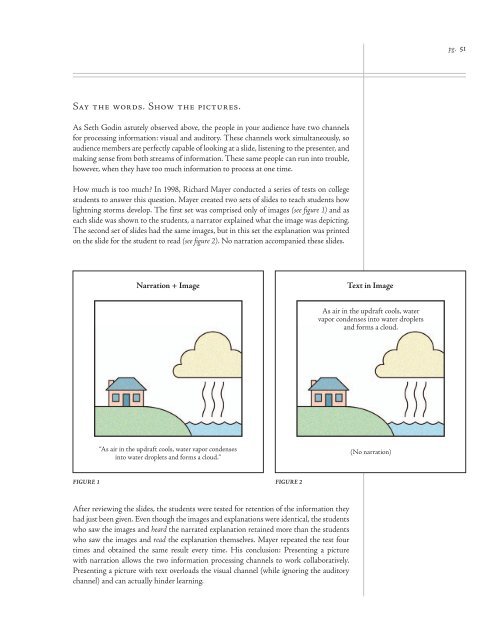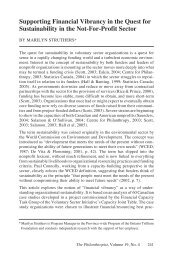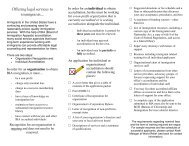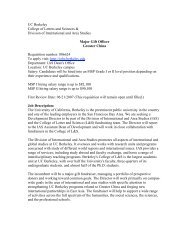Why Bad Presentations Happen to Good Causes - The Goodman ...
Why Bad Presentations Happen to Good Causes - The Goodman ...
Why Bad Presentations Happen to Good Causes - The Goodman ...
You also want an ePaper? Increase the reach of your titles
YUMPU automatically turns print PDFs into web optimized ePapers that Google loves.
Say the words. Show the pictures.<br />
As Seth Godin astutely observed above, the people in your audience have two channels<br />
for processing information: visual and audi<strong>to</strong>ry. <strong>The</strong>se channels work simultaneously, so<br />
audience members are perfectly capable of looking at a slide, listening <strong>to</strong> the presenter, and<br />
making sense from both streams of information. <strong>The</strong>se same people can run in<strong>to</strong> trouble,<br />
however, when they have <strong>to</strong>o much information <strong>to</strong> process at one time.<br />
How much is <strong>to</strong>o much? In 1998, Richard Mayer conducted a series of tests on college<br />
students <strong>to</strong> answer this question. Mayer created two sets of slides <strong>to</strong> teach students how<br />
lightning s<strong>to</strong>rms develop. <strong>The</strong> first set was comprised only of images (see figure 1) and as<br />
each slide was shown <strong>to</strong> the students, a narra<strong>to</strong>r explained what the image was depicting.<br />
<strong>The</strong> second set of slides had the same images, but in this set the explanation was printed<br />
on the slide for the student <strong>to</strong> read (see figure 2). No narration accompanied these slides.<br />
FIGURE 1<br />
Narration + Image Text in Image<br />
“As air in the updraft cools, water vapor condenses<br />
in<strong>to</strong> water droplets and forms a cloud.”<br />
FIGURE 2<br />
After reviewing the slides, the students were tested for retention of the information they<br />
had just been given. Even though the images and explanations were identical, the students<br />
who saw the images and heard the narrated explanation retained more than the students<br />
who saw the images and read the explanation themselves. Mayer repeated the test four<br />
times and obtained the same result every time. His conclusion: Presenting a picture<br />
with narration allows the two information processing channels <strong>to</strong> work collaboratively.<br />
Presenting a picture with text overloads the visual channel (while ignoring the audi<strong>to</strong>ry<br />
channel) and can actually hinder learning.<br />
As air in the updraft cools, water<br />
vapor condenses in<strong>to</strong> water droplets<br />
and forms a cloud.<br />
(No narration)<br />
pg. 51













